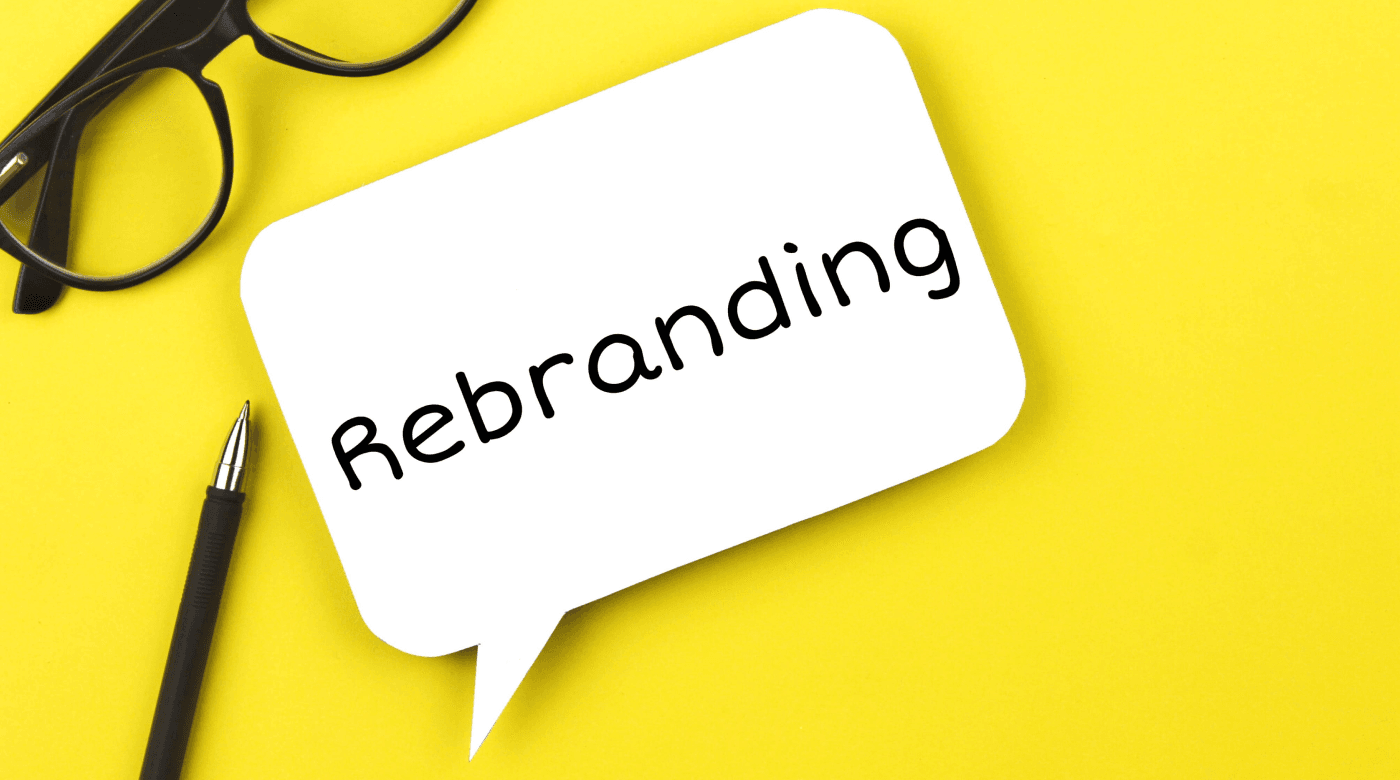A brand’s identity is one of a company’s most valuable assets. It not only reflects the values and visions, but also determines how customers, partners and the public perceive the brand. But what happens when the current brand identity no longer matches the company’s goals or market dynamics? In such cases, rebranding can be a necessary measure to reposition the brand and remain successful in the long term. In this article, we shed light on why rebranding is important, when it should be carried out and how the process can be successfully implemented from analysis to long-term maintenance.
Why is rebranding important?
Rebranding a brand is not just a cosmetic change – it is a strategic move aimed at better aligning the brand with current market conditions, customer expectations and business objectives. A successful rebrand can refresh a brand’s image, set it apart from the competition and create a stronger connection with target audiences. It can also help to reflect internal changes within the company, such as a realignment of business areas or a change in corporate structure.
Another important aspect is adapting to cultural and social developments. Today more than ever, brands need to respond to the changing values and needs of consumers. Rebranding can therefore also be a means of keeping the brand modern, relevant and authentic.
Traditional retention strategies that worked for older generations, such as a high salary or job security, often fall short when it comes to Generation Z. This cohort expects more than just monetary incentives; they are looking for a meaningful and fulfilling work environment. Studies show that companies that specifically address the needs and values of this generation not only increase their retention rates, but also build a more dynamic and innovative workforce.
When should you consider a brand redesign?
Rebranding should not be considered lightly, as it is a complex and costly process. However, there are certain situations where a rebrand may be appropriate or even necessary. These include:
- Market changes: If the market has changed drastically and the existing brand is no longer competitive, a rebranding may be necessary to reposition the company.
- Outdated image: A brand that is perceived as old-fashioned or irrelevant loses its appeal. In such cases, rebranding can help to refresh the image and appeal to new target groups.
- Internal company changes: Mergers, acquisitions or a realignment of the business strategy can make a rebranding necessary in order to adapt the brand to the new circumstances.
- Negative associations: If a brand has made negative headlines in the past or is struggling with a bad reputation, rebranding can be a way to regain customer trust.
Analysis of the current brand positioning
Before starting a rebranding process, a thorough analysis of the current brand positioning is necessary. This includes examining how customers perceive the brand, analyzing the competitive landscape and evaluating the current brand strategy. Both qualitative and quantitative data should be used to obtain a comprehensive picture.
The analysis should answer the following questions:
- How is the brand currently perceived?
- What values and messages does the brand convey?
- How does the brand differentiate itself from the competition?
- Are there discrepancies between the internal brand perception and the external perception?
This analysis is the cornerstone for all further steps in the rebranding process, as it reveals the strengths and weaknesses of the existing brand and provides clear indications of the direction the repositioning should take. If you would like to find out more about corporate design and branding, click here.
Best Practice: Airport Klagenfurt
A new holistic look was sought for the further development of Airport Klagenfurt into the most efficient and modern airport in Europe. In a 360° relaunch, we at dmcgroup have been the lead agency for the airport since 2019, supporting it in the areas of strategy, design, development and marketing.

Rebranding
for your brand
We help you rebrand your brand.
Ready for the next step?
Contact us and find out more about our services.
Development of a rebranding strategy
A rebranding strategy can now be developed based on the results of the analysis. This strategy should clearly define which elements of the brand should be retained and which should be changed. Various approaches can be pursued here:
- Evolutionary rebranding: Only minor adjustments are made in order to gradually modernize the brand without abandoning its core elements.
- Revolutionary rebranding: In this approach, the brand is fundamentally overhauled, which can include a complete realignment including a new brand identity, message and visual design.
The strategy should also define how the new brand positioning is to be communicated, which target groups are to be addressed and which channels are to be used for this. Another important component is the definition of a schedule and a budget for the implementation of the rebranding.
Communication with stakeholders
A rebranding not only affects external target groups, but also internal stakeholders such as employees, partners and investors. Clear and transparent communication is therefore essential to ensure that everyone involved understands the reason for the rebranding and supports the process.
Internal communication measures could include training and workshops to ensure that all employees internalize the new brand identity and implement it in their daily work. External communication should aim to inform customers and partners about the planned changes at an early stage and incorporate their feedback into the process.
Implementation of the rebranding
The implementation of rebranding is a complex process that requires careful planning and coordination. It involves not only the visual redesign of the brand, but also the adaptation of all marketing materials, communication channels and products. In addition, all brand touchpoints – from the online presence to packaging and corporate communication – must be consistently adapted to the new brand strategy.
A gradual rollout can help to identify and correct potential errors at an early stage. Care should also be taken to ensure that the rebranding is not viewed in isolation, but is integrated into the overall corporate strategy.
Performance measurement and customization
Once the rebranding has been implemented, it is important to continuously monitor the success of the measure. To this end, clear KPIs should be defined that cover both quantitative and qualitative aspects. Possible indicators could be brand awareness, customer loyalty, feedback from the target groups or sales development.
If necessary, adjustments should be made on the basis of the performance measurement in order to further optimize the brand. Rebranding is a dynamic process that requires constant monitoring and, if necessary, readjustments.
Long-term brand management after rebranding
A successful rebranding is only the first step on the way to a strong brand identity. Continuous brand management is necessary to maintain the brand in the long term and consolidate its positioning. This includes regular reviews of the brand strategy, adapting to changing market conditions and consistent communication of the brand values across all channels.
In the long term, the brand should always be developed in line with the company’s objectives and the needs of the target groups. This not only keeps it relevant, but also strengthens its competitive position.
Conclusion
Rebranding a brand is a strategically important process that goes far beyond a simple redesign of the logo. It requires thorough analysis, a well thought-out strategy and careful implementation. When done right, rebranding can breathe new life into a brand, strengthen its competitiveness and make it successful in the long term.
From the latest industry trends and the latest insights into AI and UX/UI design to exciting use cases.
Sign up for our monthly newsletter and stay up to date!
Stay
tuned
More articles




